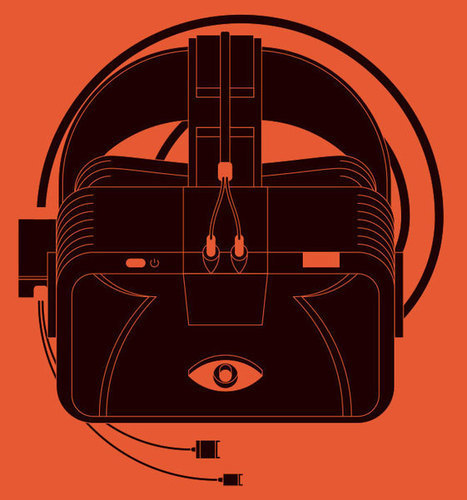Oculus has found a way to make a headset that does more than just hang a big screen in front of your face. By combining stereoscopic 3-D, 360-degree visuals, and a wide field of view—along with a supersize dose of engineering and software magic—it hacks your visual cortex. As far as your brain is concerned, there’s no difference between experiencing something on the Rift and experiencing it in the real world.
Via luiy, Mlik Sahib



 Your new post is loading...
Your new post is loading...








ANATOMY OF THE RIFT
The Brain.
The biggest challenge in creating realistic VR is getting the image to change with your head movements, precisely and without any perceptible lag. The Rift fuses readings from a gyroscope, accelerometer, and magnetometer to evaluate head motion. Even better, it takes 1,000 readings a second, allowing it to predict motion and pre-render images, shaving away precious milliseconds of latency.
The Display.
Even the best LCD can take 15 milliseconds for all its pixels to change color. The Rift uses AMOLED screens, which can switch color in less than a millisecond. Oculus also figured out how to deactivate those pixels rapidly so the image doesn’t smear or shake when you whip your head around.
The Optics.
You want an image that fills your entire field of vision without distortion. Typically that requires heavy, expensive lenses. The Rift uses a pair of cheap magnifying lenses, and Oculus developers distort their games so they look right when viewed through the optics.
Positional Tracking.
Previous VR headsets let you look around but not move around. The Rift’s small external camera monitors 40 infrared LEDs on the headset, tracking motion and letting you crouch, lean, or approach an in-game object.
"Beyond that, though, the company and its technology herald nothing less than the dawn of an entirely new era of communication. Mark Zuckerberg gestured at the possibilities himself in a Facebook post in March when he announced the acquisition: “Imagine enjoying a courtside seat at a game, studying in a classroom of students and teachers all over the world, or consulting with a doctor face-to-face—just by putting on goggles in your home.” That’s the true promise of VR: going beyond the idea of immersion and achieving true presence—the feeling of actually existing in a virtual space."